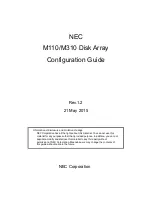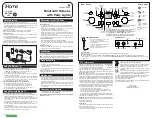
Production Data
WM9090
w
PD, November 2010, Rev 4.1
31
ANALOGUE OUTPUTS
The speaker, headphone and earpiece outputs are highly configurable and may be used in many
different ways.
SPEAKER OUTPUT CONFIGURATIONS
The Class D speaker output is driven by the speaker mixer, SPKMIX. The speaker output operates in
a BTL configuration. Fine volume control is available using the Speaker Output PGA; a boost
function is also available. See the “Output Signal Path” section for more information on the speaker
mixing options.
Eight levels of signal boost are provided in order to deliver maximum output power for many
commonly-used SPKVDD/AVDD combinations. The boost level from 0dB to +12dB is selected using
the SPKOUTL_BOOST register field. To prevent pop noise, the SPKOUTL_BOOST register should
not be modified while the speaker output is enabled. Figure 4 illustrates the speaker output and the
mixing and gain/boost options available.
Ultra-low leakage and high PSRR allow the speaker supply SPKVDD to be directly connected to a
lithium battery. Note that an appropriate SPKVDD supply voltage must be provided to prevent
waveform clipping when speaker boost is used.
DC gain is applied automatically to adjust the signal from VMID to SPKVDD/2. This provides
optimum signal swing for maximum output power.
Figure 4 Speaker Output Configuration and Boost Operation
REGISTER
ADDRESS
BIT LABEL
DEFAULT
DESCRIPTION
R37 (25h)
ClassD3
5:3
SPKOUTL_BOOST
[2:0]
000
(1.0x)
Speaker Output Gain Boost
000 = 1.00x boost (+0dB)
001 = 1.19x boost (+1.5dB)
010 = 1.41x boost (+3.0dB)
011 = 1.68x boost (+4.5dB)
100 = 2.00x boost (+6.0dB)
101 = 2.37x boost (+7.5dB)
110 = 2.81x boost (+9.0dB)
111 = 3.98x boost (+12.0dB)
Table 15 Speaker Boost Control
















































